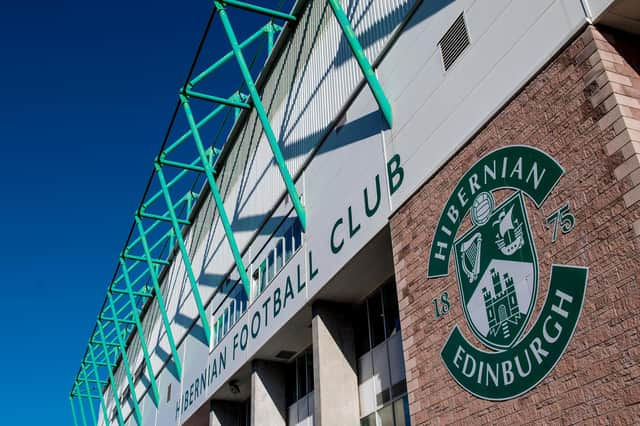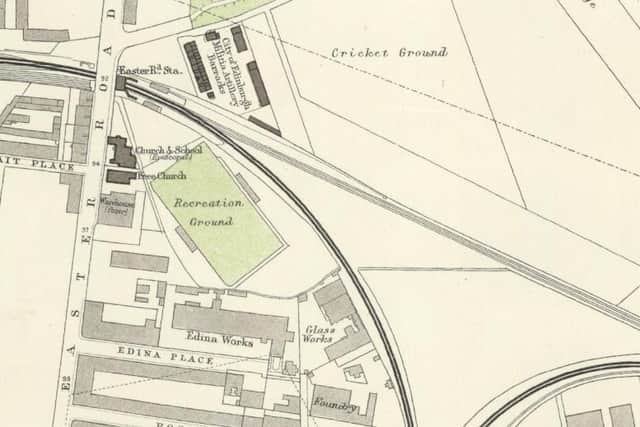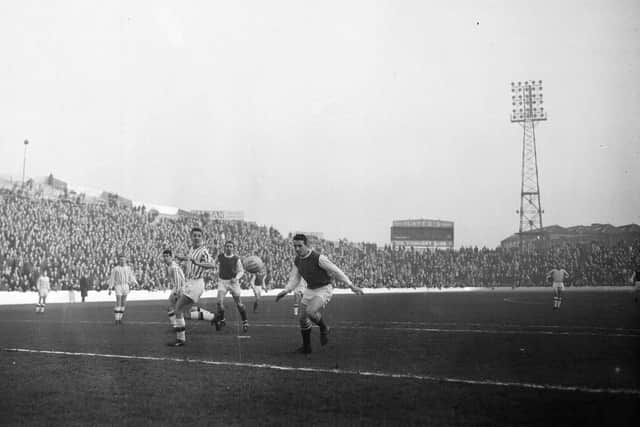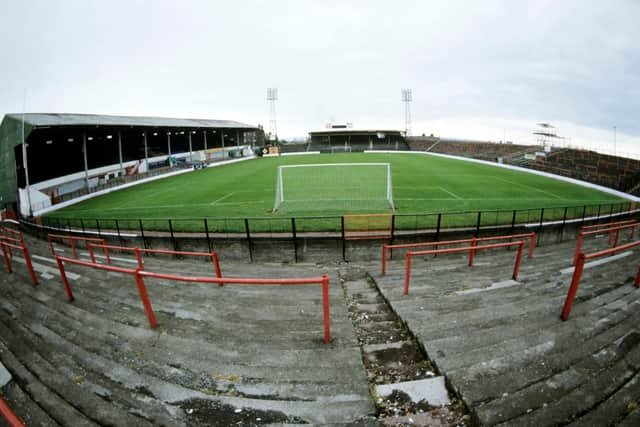Hibs: Why is the stadium called Easter Road, when did it stop being 'Hibernian Park', and who were 'Leith Hibernians'?


Formed in 1875, Hibs played their first matches – including a Christmas Day meeting with city rivals Hearts – at East Meadows, like many nascent Edinburgh clubs, but before long there were too many teams for the Meadows to support and clubs soon looked elsewhere for a pitch.
Newington days
St Bernard’s, Hearts, and Hibs all played in Newington for a time. Hibs played at the Edinburgh Association ground, taking out a lease in 1877, popping over to Powderhall for the 1878/79 season, and then coming back, albeit briefly.


Advertisement
Hide AdAdvertisement
Hide AdAccording to the Evening News, the ground was also referred to as Craigmillar Park, East Craigmillar Park, Crawfurd Road, and Mayfield Park, just to confuse matters.
The club continued using the pitch for training purposes until at least 1887, by which time they had relocated to Hibernian Park. Following Hibs’ 2-1 Scottish Cup final victory over Dumbarton, beaten semi-finalists Vale of Leven lodged a complaint, accusing Hibs of professionalism. The complaint focused on star forward Willie Groves. An apprentice boot-finisher, Groves ‘did not work regularly’ according to one of his colleagues and the suggestion was the club chiefs were paying Groves handsomely for his services and to account for lost time from his employment.
Vale of Leven’s case was flimsy, and Hibs were cleared of any wrongdoing, but as part of the club’s evidence secretary John McFadden made reference to the team training at ‘Craigmillar Park – the old Edinburgh Association ground’.
Hibernian Park


Hibs moved to the Easter Road area in 1880, seizing an opportunity to be based between the Little Ireland community in the Cowgate, and the population of the port of Leith.
Advertisement
Hide AdAdvertisement
Hide AdThe ground, on the site of the present-day Bothwell Street, had stands on the east and west side of the pitch and newspaper adverts for matches located the ground at Easter Road.
The media could be inconsistent with some ground names, as seen with Mayfield, but it is clear from primary sources that this ground was nearly always referred to as Hibernian Park.
The ‘other’ Easter Road ground


Just over the railway line from Hibernian Park was the Caledonian Cricket & St. George Football Ground, adjacent to the City of Edinburgh Militia Artillery Barracks on Albion Road.
Around this time, numerous lower-level games were played at a ground known as ‘Easter Road’. With Hibs’ ground known as Hibernian Park, the ‘Easter Road’ venue can only have been the cricket ground.
Advertisement
Hide AdAdvertisement
Hide AdHibernian Park lasted into the 1890s but when the club failed to secure a new lease on the ground, building work – which had already started around the edges of the pitch – expanded and Hibs lost their home.
After failed attempts to negotiate a lease at Powderhall and Logie Green, Hibs agreed to move to nearby Hawkhill but after one game – a 1-1 draw with Mossend Swifts – a dispute resulted in them looking elsewhere.
With several players joining Celtic for financial incentives, the club’s hierarchy split over the issue of Irish Home Rule, and the absconsion of the club secretary to Canada with a significant amount of money, Hibs were in dire straits.
When the club failed to pay their subscriptions to the Scottish FA in 1891 it was struck from the membership rolls.
Leith Hibernians
Advertisement
Hide AdAdvertisement
Hide AdIn 1891, Leith Athletic joined the league in place of Hibs. Based at Bank Park, between St Clair Street and Lochend Road, Leith had staged a benefit match to raise funds for their struggling neighbours but to little avail. Hibs limped on with a view to groundsharing with Leith, but temporarily ceased operating.
Ironically the final match before the pause was a 6-1 defeat by Leith Athletic at Bank Park. The Leith Burghs Pilot carried a sombre report on the game, saying: “The ‘last appearance’ of the Hibs resulted in a disappointing game. That is hardly to be wondered at, however, when the non-appearance of the back-bone of their team is taken in to account. The substitutes played pluckily, but were hardly class enough for their opponents. The Hibs scored first but, try as they would, could not better themselves. The game ended in favour of the ground team by six goals to one.”
The next week, a team calling themselves Leith Hibernians beat Edinburgh Northern 2-1 at Logie Green. It was essentially Hibs operating under a temporary moniker. The team struggled for players and their final match was weeks later – a 4-2 defeat by Leith Athletic at Bank Park.
Resurgence of Hibs and move to Easter Road name
Hibs eventually resumed operations in 1893 after securing a lease on ground forming part of Drum Park. The pitch had a slope and restricted access from Easter Road, but there was a feeling of continuity given the close proximity to the site of Hibernian Park.
Advertisement
Hide AdAdvertisement
Hide AdThe first game at the new Hibernian Park was a friendly against Clyde in February 1893. Because Hibs were only renting the land, there were fears that history would repeat itself and the ground would be built on. Hibs explored numerous options including relocating to Aberdeen, Motherwell, and building a new stadium at Northfield. The new stadium was built, but Hibs never moved in.
The long-term future of Easter Road was decided in 1922 when a new 25-year lease was agreed and work undertaken to renovate the ground. Three banks of terracing were constructed, a main stand built with room for nearly 4,500 people, the pitch moved 40 yards to the east to allow for the new stand, and the slope reduced to six feet.
It is unclear when Easter Road became the preferred moniker for the ground, although it was even occasionally dubbed ‘Easter Road Park’ in the early 1900s.
Hibernian Park – although still used occasionally by the Evening News as late as 1942 – seems to have been used less from 1920 onwards, coinciding with the renovations carried out.
Message from the editor
Thank you for reading this article. If you haven't already, please consider supporting our sports coverage with a digital sports subscription.
Comment Guidelines
National World encourages reader discussion on our stories. User feedback, insights and back-and-forth exchanges add a rich layer of context to reporting. Please review our Community Guidelines before commenting.